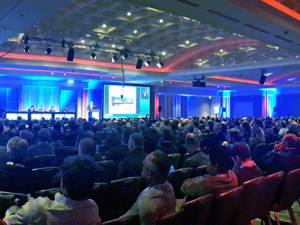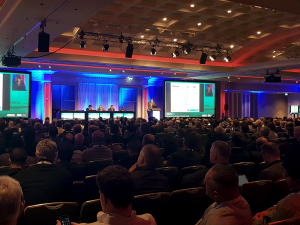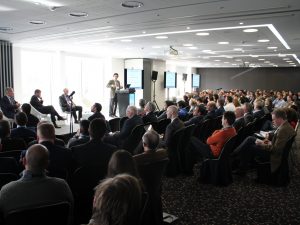Within five years, a standardized technique will be developed for deploying MRI in the diagnosis of prostate cancer. Urologists will be familiar with the PI-RADS (Prostate Imaging Reporting and Data System) scheme, and cooperate closely with better-trained radiologists in a team. This can result in a ten-minute “manogram”. These are some of the predictions that radiologist Prof. Jelle Barentsz gave during a panel discussion following this morning’s session on prostate cancer at ESOU16. The 13th Meeting of the EAU Section of Oncological Urology is taking place in Warsaw, on 15-17 January 2016.
Prof. Maurizio Brausi, ESOU Chairman and also chairing this first session, complimented Prof. Barentsz’ presentation and participation throughout the morning’s session. “Prof. Barentsz is extremely experienced, one of the most experienced radiologists in the world when it comes to MRI. He was involved in a lot of the discussions, answered a lot of questions from urologists, and he emphasized the need for better training for radiologists and for centres to use MRI more systematically.”
Prof. Brausi is also enthusiastic about the adoption of MRI for PCa diagnosis and active surveillance: “MRI has improved in recent years, and urologists are learning to make better use of it. We are coming around to the idea that MRI is the best first step. Following a positive MRI scan, we should look to fusion biopsy. This reduces possible complications for our patients. I think MRI will become a standard procedure, and today we learned a lot about the follow-up for these patients.”
“This was a high-level session, with important presentations and a lot of discussion. When we asked the audience who had access to MRI and used it routinely, about one third of the participants raised their hands. The last time we discussed this, only a small minority used MRI.”
Prof. Bob Djavan, who also chaired this session, was impressed by the rate at which MRI was used as a diagnostic tool. “When I gave a similar presentation three years ago, this was not a common procedure. These days it is already much more widespread.”
The session featured prominent innovators and specialists in the field, including Dr. Jonas Eigar Hugosson and on the Göteborg Randomised Screening Study and Prof. Peter Carroll on the possibility of finding reliable triggers in active surveillance.
ESOU16
Earlier today Prof. Piotr Chlosta, representing the local organizing committee, emphasized the close integration of Polish and European Urology. For instance, the Polish Urological Association has adopted the EBU exam as a requirement for national accreditation, giving Poland an relatively high percentage of FEBUs among its urologists, and the single largest national group of FEBUs in Europe. Prof. Chlosta awarded Prof. Brausi an honorary diploma in recognition of his accomplishments and hosting the ESOU meeting in Warsaw.
The first day of ESOU16 was largely devoted to prostate cancer, but it also included sessions on localized and locally advanced renal cancer, and urothelial and bladder cancer.





